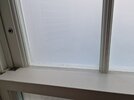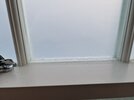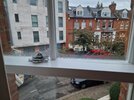- Joined
- 8 Mar 2020
- Messages
- 106
- Reaction score
- 1
- Country

Just had my old single-pane timber sash windows replaced with new, double-glazed ones. I woke up to this amount of condensation, which is much better than the old crappy windows, but still, it can accumulate and build moisture etc.
Is this right at the end of the day for new windows? Should I expect some condensation at all?
Btw, I was sleeping in this room and it has a wooden plantation blind closed, but it's quite a big room, around 20m2 with tall ceilings.
Is this right at the end of the day for new windows? Should I expect some condensation at all?
Btw, I was sleeping in this room and it has a wooden plantation blind closed, but it's quite a big room, around 20m2 with tall ceilings.




